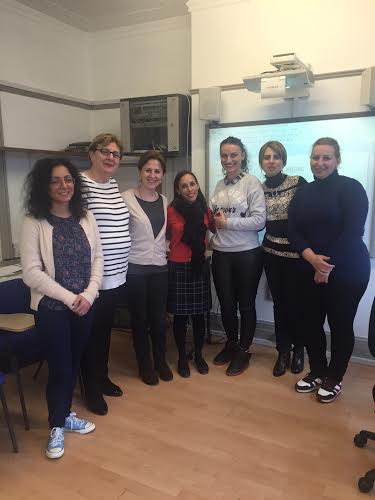 Good grammar helps you communicate clearly and accurately. Whether you’re chatting with friends or giving a serious presentation, utilising appropriate grammar increases credibility and understanding.
Good grammar helps you communicate clearly and accurately. Whether you’re chatting with friends or giving a serious presentation, utilising appropriate grammar increases credibility and understanding.
But mistakes in using English happen, and this affects how you communicate. But don’t worry because this will help you learn the route to understanding grammar. Our goal is clear: identify the mistakes and provide you with the tools you need to fix them quickly. So join us on a journey into the maze of syntax, where each turn promises increased knowledge and English language mastery.
Identifying and correcting common grammar mistakes
Spotting and fixing common grammar mistakes is the first thing we need to do. Sentences sound right when the subject and verb match. Remember, if you’re talking about one thing, use a singular verb; if you’re talking about more than one thing, use a plural verb. Here’s an example: “The cat purrs” sounds good, while “The cat purr” doesn’t make sense.
Modifiers are words that describe other words. When they’re in the wrong place, sentences become unclear. They alter what you’re saying depending on where they’re placed in a sentence. In the sentence “Running down the street, the dog chased the ball,” the modifier “running down the street” is placed at the beginning. This positioning can confuse the reader because it might seem like “running down the street” describes the street itself, rather than the dog’s action. As a result, it implies that the street is in motion, which doesn’t make sense. To address this ambiguity, the modifier should be placed closer to what it’s describing. Therefore, the revised sentence would be: “The dog chased the ball while running down the street.” This revision clarifies that it’s the dog, not the street, that’s in motion, making the sentence clear and logical.
Now, don’t forget about homophones, which are words that sound similar but have different meanings. Knowing the difference between “their” and “there,” as well as “your” and “you’re,” is important. Remember that “their” suggests possession, whereas “there” refers to a location. Similarly, “your” conveys possession, whereas “you’re” is a contraction of “you are.”
Armed with these skills and knowledge, you may confidently navigate the maze of English language.
Punctuation pitfalls to avoid
Now, let’s look at common punctuation errors. Comma splices and run-on sentences disrupt your writing flow, like rude guests at a party. A comma splice is when two phrases are joined with just a comma, like in “She loves to read, she spends hours in the bookstore.” To fix it, use a semicolon instead of the comma, or split the phrases into two sentences. When fixed, it should look like this: “She loves to read; she spends hours in the bookstore.” Or: “She loves to read. She spends hours in the bookstore.”
Run-on sentences happen when you put two sentences together without enough punctuation or joining words, like in “I enjoy hiking; it helps me clear my mind.” Use punctuation like a comma or a joining word like “and” to fix it. For example: “I enjoy hiking, and it helps me clear my mind.”
Apostrophes can be tricky. Possessive apostrophes show ownership, like in “The cat’s whiskers.” Contracted apostrophes stand for missing letters, like in “You’re” for “you are.” Mixing them up can lead to confusion, like with “it’s” versus “its.” “It’s” means “it is,” while “its” shows possession.
Lastly, getting punctuation wrong can make your writing hard to understand. Following the rules makes your writing look professional, whether you forget a full stop at the end of a sentence or put a comma in the wrong place in a list. Armed with this knowledge, your writing will reach new heights of clarity and precision.
Improving clarity and cohesion in writing
Being clear is crucial in communication. Ambiguity, where a sentence can have different meanings, can confuse readers. For instance, consider the sentence “She saw the man on the hill with the binoculars.” Here, it’s unclear whether the woman saw the man who was on the hill using binoculars, or if she herself was on the hill and saw the man with binoculars. This ambiguity can lead to confusion as it’s not clear who was using the binoculars and who was on the hill.
To avoid confusion, make your sentences super clear by giving enough details or rearranging them. Using the same verb tense all the way through your writing helps it make sense. If you start switching tenses in the middle of a sentence, it can get confusing. For example, saying “She eats dinner and then she went for a walk” mixes present and past tense. Instead, you could say “She eats dinner and then goes for a walk” to keep it consistent. So, whether you’re talking about things from the past or what’s happening now, stick to one tense.
Finally, spice up your writing style to keep your readers hooked. Just like how a symphony uses different notes to sound good, using different types of sentences can make your writing interesting. Mix it up with short, punchy sentences and long, flowing ones. With these tricks, your writing will be super clear and keep your readers fascinated.
Congratulations! Now you’re all set to become a master of clear and confident communication at GG Colleges. With perfect language, you can turn your message from plain to amazing. Every comma, apostrophe, and sentence you use adds to your message’s power. Following these principles will help you avoid common English mistakes easily. Remember, becoming a grammar expert is a journey that never ends. With practice, you’ll succeed and use the English language confidently. So, keep going, and show off your skills to the world.







